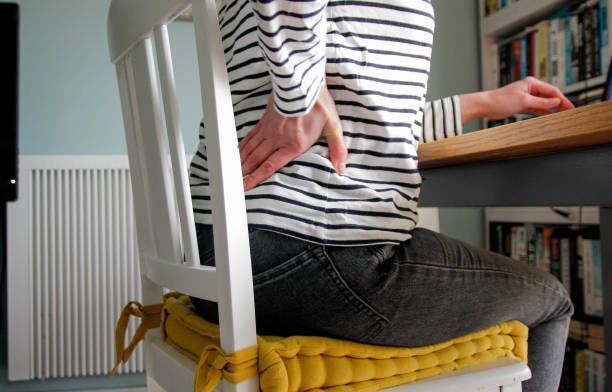Spinal Stenosis Treatments for Patients in Hazlet, NJ & Old Bridge, NJ
Spinal Stenosis of the neck and back is usually a slow process that occurs over years and results in thickening of the ligaments, formation of bone spurs, and deterioration of the disc material. As a result, Spinal Stenosis reduces the space available for your nerves to travel through your spine, resulting in nerve compression. Spinal Stenosis most often occurs in your lower spine and neck.
The nerve compression that results from Spinal Stenosis causes symptoms that can include pain as well as numbness and weakness in your arms, hands, legs, and feet. Spinal Stenosis in your lumbar spine can cause sciatica. If left untreated, severe Spinal Stenosis can cause complications such as incontinence, poor balance, or paralysis.

-
Types
Cervical Stenosis may cause neck or arm pain, numbness, and weakness in both hands, loss of coordination when walking or during other activities, and/or muscle spasms in the legs. Cervical Spinal Stenosis may require surgery, possibly urgent or even emergency surgery.
Lumbar Stenosis may produce lower back pain and leg discomfort or pain. Surgery may be necessary if Lumbar Stenosis limits normal activity, causes leg weakness and/or numbness, makes standing or walking difficult, or affects your ability to control bowel and bladder functions.
Thoracic Stenosis – The thoracic spine in the upper back has some unique characteristics that make thoracic Spinal Stenosis a little different than Stenosis in other areas. Because the 12 thoracic vertebrae connect to the 12 sets of ribs that protect our major organs, the thoracic spine is more fixed than the cervical or lumbar areas. The spinal canal is narrower than the rest of the spine, too. Stenosis typically accompanies Thoracic Stenosis in the lumbar area and sometimes in the cervical spine.
-
Causes
In some cases, Spinal Stenosis is a congenital condition. However, Spinal Stenosis usually develops over time. Some of the conditions that lead to Spinal Stenosis include:
• Herniated discs
• Bone overgrowth due to degenerative conditions like arthritis
• Thick ligaments
• Abnormal growths or tumors
• Spinal injuries from auto collisions or sports accidents
Your risk of Spinal Stenosis increases as you get older. The condition is most often diagnosed in patients over the age of 50.
-
Treatment
Dr. Ani provides customized treatment for Spinal Stenosis depending on your symptoms and the location of the narrowed part of your spine. He prescribes medication to reduce inflammation and muscle spasms and to manage your pain. Dr. Ani might also recommend and perform spinal injections, sacroiliac joint injections, epidural, or facet injections to relieve your pain.
You may also benefit from chiropractic care with physical therapy to relieve pain and build strength and flexibility in the muscles surrounding your spine. This can also improve spinal support, improve your balance, and reduce your risk of falls or other accidents.
In severe cases, Dr. Ani may recommend surgery to increase the space available in your nerves. These operations are often referred to as decompression procedures, such as laminectomy, laminotomy, and laminoplasty. He performs both traditional and minimally invasive surgeries, depending on the severity of your condition. In addition, Dr. Ani also performs both minimally invasive and open spinal fusions to stabilize an unstable spine.
For more information about Spinal Stenosis, call our team at (732) 264-8282 today!
BROWSE OUR WEBSITE
1 Bethany Rd, Building #2, Suite 21, Hazlet, New Jersey 07730
300 Perrine Road, Suite 315,
Old Bridge, NJ 08857
BUSINESS HOURS
- Mon - Fri
- -
- Sat - Sun
- Closed
